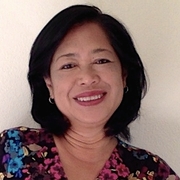A Big Cheer for the California Healthy Youth Act
By Joan Singson | October 3, 2017
Director of Population Health, San Joaquin General Hospital
California is helping to pave the way! Adolescent sexual health education got a big boost when the California Healthy Youth Act (CHYA) was enacted in 2016. Across the nation, health educators and advocates for comprehensive sexuality education are looking at California’s legislation as a model that puts student knowledge, skills and well-being first.
The act has made it a mandate for publicly funded schools to provide students with comprehensive sexual and reproductive health education. They must receive this education at least once in middle school, and at least once more in high school. But that’s not all!
Broader Definitions
The Education Code now sets a broader definition of comprehensive reproductive and sexual health education. It includes topics such as healthy and safe relationships, sexual orientation, gender identity and pregnancy outcome options. Instruction must also provide inclusive education that affirms the diversity of adolescents and people in general.
This means that teaching materials (role plays, discussions, examples, vignettes) must include examples of same-sex relationships and discussions of gender, gender-identity and gender expression. Medically accurate information about prevention of pregnancy and STDs must be presented, along with contact information for local resources that can provide students with sexual health care.
Instruction must also be appropriate for students of all races, ethnicities and cultural backgrounds; responsive to English language learners; and workable for students with disabilities.
Both New and Familiar Features
Many of the trusted and traditional features of sexuality education are sustained in this act. For example, parental notification is required, and parents/guardians can opt out of the program for their child. Abstinence must be presented as one of the strategies for avoiding pregnancy and STD. HIV prevention must be addressed specifically.
But there are also new requirements that were once up to districts or individual instructors. For example, instruction must cover information about sexual harassment, sexual assault and sex trafficking. The challenge for educators is to go beyond merely defining these terms. They need to actually raise student awareness, and then help students build efficacy to reduce their personal risks and to seek help for themselves or a friend if needed. More importantly, these guidelines provide the opportunity to teach the value of respecting personal boundaries; ensuring mutual, affirmative consent in intimate sexual relationships; and emphasizing that no one has the right to pressure, harass, exploit or abuse another person.
Building Buy-In, Offering Materials
Even though passing a new law or changing the education code can be a great triumph, it’s often not enough. We also need to build understanding of the law, boost compliance by cultivating support for the intent of the law, and offer materials that make it possible for districts and schools to put these principles into practice and assess how they’re doing.
Toward this end, ETR has been working with the Adolescent Sexual Health Work Group (ASHWG) to build support for educators, schools and school districts in this process. ASHWG is a collaborative of both governmental and non-governmental organizations that serves to promote and protect the sexual health of California youth.
ETR has also created an assessment tool that can help school districts (or any individual or group working with schools or districts) determine whether a program or curriculum/materials comply with the new provisions of the Education Code specific to CHYA. (Ed. Note: You can find additional free materials from ETR at our Program Success Center. Look for the pull-down menu “Free Tools.”)
ETR has prepared an enhanced version of one of the evidence-based curricula, Making Proud Choices! (MPC), for use in California. MPC is an adaptation and extension of the original Be Proud! Be Responsible! curriculum. MPC-California Edition meets all of the new CHYA-focused code requirements and is designed so it can be used in both school and community-based settings.
Progress Makes a Difference
States across this nation have a range of requirements and options in sexuality education. Many are making progress in addressing issues of inclusivity, affirmative consent and skills-based, evidence-supported instruction. As a long-time advocate in the field of sexual health education, I am both gratified and proud to have had the opportunity to work on the support efforts that are making what I think is the best of the batch—the CHYA—a reality.
Joan Singson is the Director of Population Health at San Joaquin General Hospital. She was formerly a Program Manager here at ETR and continues to work with us in an occasional consulting role. She can be reached at jsingson@sjgh.org.




